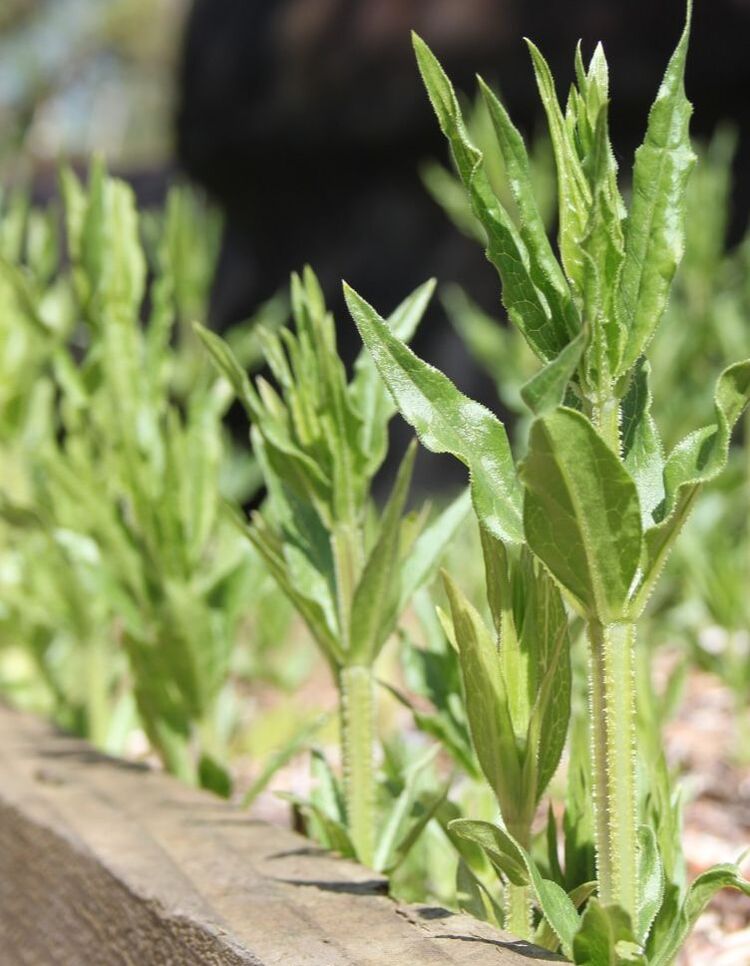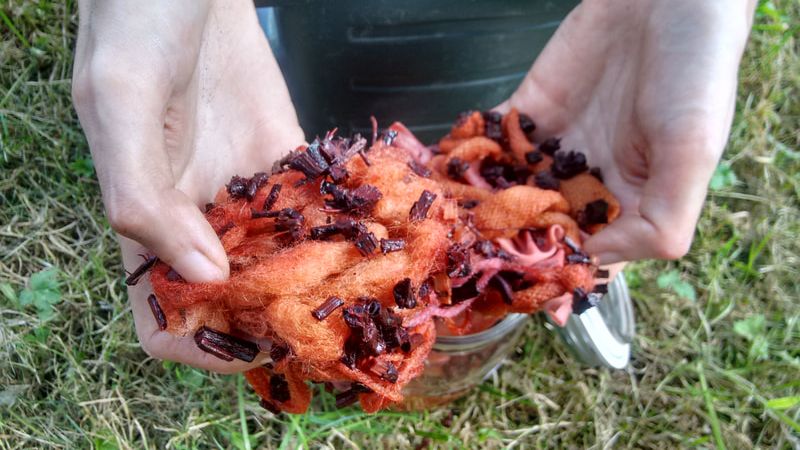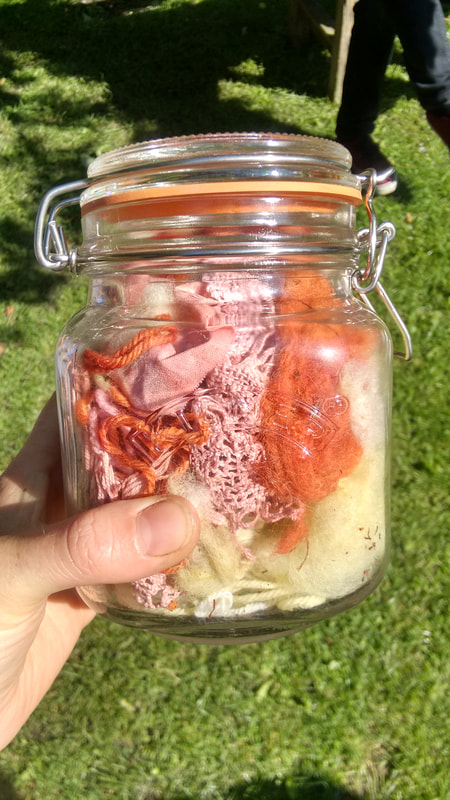Red/Orange: Madder
|
The Madder plant grows in a bed of its own in the lower garden. It also grows out of cracks near to the brick wall in the top garden. The madder plant is related to sticky grass (also known as goose grass). Once it gets hold in a garden it can become invasive so despite the plant being moved from the top garden to a bed in the lower garden some years ago, small shoots reappear in the top garden each year.
Before the advent of synthetic dyes, madder was a highly prized crop. Bright reds could be achieved by using the nineteen stage Turkey red process (a closely guarded secret until the 1780’s) [1]. To achieve the best colour madder plants should be about five years old. This allows the root, where the dye colour is found, to grow thick and sturdy. The madder plants at Armley Mills are between 3-4 years old (there will also be some new growth where the plants have previously been harvested). Our experiments with madder started with some of the volunteers excavating some of the madder plants from their raised bed. The largest madder plants were pulled from the soil with relative ease. After excavation the roots were washed to remove residual soil and left to dry on a sunny windowsill. The sticky, sprawling leafy tops of the plants were discarded in the compost heap, which seemed a shame. Had we been on the ball we could have used the tops of the madder to make another dye pot, and see if the tops contained any colour. A week later the roots were shrivelled and dry. It happened to be one of the hottest days of the year. Too hot, really, to garden. So the volunteers sat in the shade of one of the big trees in the garden, carefully cutting up the madder into really tiny pieces. More care was taken in preparing the madder root than was strictly needed, however the hot weather seem to dictate doing things slowly and carefully. Tea break was substituted for ice-lollies and the hot work of setting up the dye pots left until the following week. The next week dawned a lot cooler. The tiny madder pieces were duly added to the dye pot, hot water was added, along with a sprinkling of dyers chalk powder. The quality of water greatly affects the take up of dye. Woad produces the best colour when soft water is used. Madder is the opposite and dyes most effectively with hard water. Leeds water is soft -ish. So we added some chalk to hopefully achieve the best colour possible. A small amount of both cotton and wool fibre was then added to the pot. The dye pot was then left in a thermal bag. At tea break the dye pot was passed around for inspection. The dye liquid was a distinctive orangey colour. We could have removed the fibres at this stage, but keen to achieve the strongest possible colour we elected to leave the contents of the dye pot in situ and store it in the dye cupboard until the following week. Mindful that we were leaving the dye pot in a museum building, and not wanting it to grow mould we added a crushed up Camdem tablet (used in wine making) to the jar before departing. The following week we extracted the fibre from the dye pot. Leaving the fibre in the cold dye pot for a week had produced a deep orangey coloured wool fibre and pinkish coloured cotton. Admittedly the fibres did pong a bit when removed from the pot, but once washed and left to dry in the sun the smell quickly vanished. The colours we produced were bright and appealing to the senses. However the very bright red resulting from the 19-stage Turkey red process remained elusive to us. Producing bright scarlets is probably beyond the scope of what we can achieve with natural dyes in the garden setting (unless we decided to go down the route of using crushed up beetles which form the basis of cochineal. But in the hope in future of improving the madder at Armley Mills, this winter we have added lime to the soil of the madder bed. This reportedly improves the colour of the madder root, and with some of the plants close to the golden age of five years old it would definitely be worth some more experiments with madder in the future. [1] St. Clair, K., 2017. The Secret Lives Of Colour. Penguin Books |



